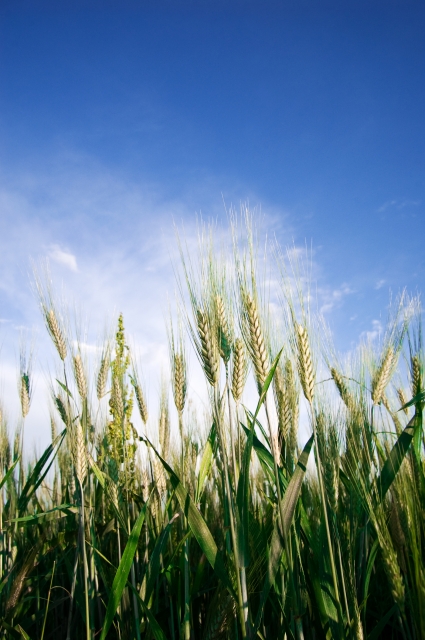 Lately we’ve been bombarded with TV and magazine ads singing the praises of whole grains and that we should add a lot of them to our diet for good health. However, choosing an actual “whole grain” can be confusing – you have to read labels carefully to be sure your food choice really is whole grain and not a “refined grain.”
Lately we’ve been bombarded with TV and magazine ads singing the praises of whole grains and that we should add a lot of them to our diet for good health. However, choosing an actual “whole grain” can be confusing – you have to read labels carefully to be sure your food choice really is whole grain and not a “refined grain.”
To make it more confusing, some whole grain choices are not as great for us as others and observing serving sizes is important. Let me share with you then what I tell my patients about adding whole grains to their diet – how much they should eat and which ones have greater health benefits than others. First, let me explain the difference between whole and refined grains.
Whole Grains vs. Refined Grains
If you’re like many of my patients, you might think that a dark loaf of bran-containing bread is a healthy, whole grain product. Well, it might be, but it may also be refined grain that was darkened by molasses with a little bran added later. To know for sure, you have to read the label and actually read “whole grain” wheat, rye, etc listed as the first ingredient. Here’s the difference between whole and refined grains:
Whole Grains
Contain the entire grain kernel, the bran, germ, and the endosperm, each part containing protein, B vitamins, or fiber. Whole grain examples:
• Whole wheat flour, whole cornmeal, whole rye flour, brown rice, wild rice, oatmeal, bulgur, barley, whole wheat pasta and even popcorn!
• Amaranth, quinoa, sorghum, triticale, millet
Refined Grains
These grains have had their bran and germ removed in the milling process. This creates a smoother texture but also removes the B vitamins, iron and fiber. The B vitamins and iron are added back in the processing but not the fiber. These include:
• White flour, white bread, white rice, degermed cornmeal, cornbread, tortillas, grits, noodles, spaghetti, pita bread
• Most breakfast cereals unless they state “whole grain” on the box/label
Health Benefits of Whole Grains
Whole grain foods are full of B vitamins which help the body create/sustain energy, red blood cells, and even memory. They are also full of magnesium and potassium which help regulate blood pressure and also contain selenium, a high powered antioxidant that protects against cancer. Here are some other benefits of whole grains:
• The fiber helps reduce the risk of heart disease as it sweeps bad cholesterol out of the intestines. Also helps prevent constipation.
• Fortified with folate, whole grains help prevent neurological birth defects.
• The low glycemic load/fiber of many whole grains can help decrease hemoglobin A1c levels, thereby helping to control and/or prevent diabetes.
Health Drawbacks of Whole Grains – How Much Should You Eat?
The FDA has revised their food pyramid so that the largest portion of it consists of grains, i.e., breads, cereals, crackers, rice, corn, etc. It recommends between 5-6 ounces of grains a day for people in the over 40 age range. This could look like 1 large whole wheat bagel, or 1 microwave bag of pop corn (equals 4 ounces) and 2 slices of regular bread (equals 2 ounces). This is an okay recommendation for people who are very active and not overweight, diabetic/ pre-diabetic/insulin resistant.
However, many of my over-40 patients actually start to gain weight on the FDA’s recommended amount of grains mainly because their metabolisms have slowed down and they can be slightly to moderately insulin resistant. Higher glycemic load grains like corn, or even 1 large whole grain bagel can cause insulin spikes in some people, which can create belly fat. A high amount of belly fat puts you at risk for liver disease, diabetes, and heart disease.
To prevent insulin spikes, I would recommend the following:
➢ No more than 3-4 ounces of low glycemic load, whole grain foods spaced out in 1 ounce servings throughout the day.
➢ No corn, although a once a week treat of a 2-3 cups of popcorn could be worked in.
➢ Increase your intake of low glycemic vegetables to provide fiber and vitamins.
Here are some good examples of 1 ounce serving sizes of low glycemic load whole grains:
➢ 1 mini bagel
➢ 5 whole wheat crackers
➢ ½ cup bran cereal
➢ ½ cup whole wheat pasta noodles
➢ 1 whole wheat “lawash”, a flat, circular, high fiber, low glycemic load bread that can be used for tortillas, wrap sandwiches, etc.
➢ ½ cup cooked brown rice
➢ ½ cup cooked barley
As I tell my patients, whole grains have a lot of good health benefits attached to them and can be beneficial to your diet. However, you should enjoy them in moderation, in their proper serving sizes, spaced throughout the day to prevent spiking of insulin.
You may also want to invest in a good glycemic index/load reference which lists most whole grains when making your product choices. Remember, too, to read wrapper labels carefully both to determine if your product choice truly is whole grain and to gauge the correct serving size. If you feel you would like more specific help in understanding how to use whole grains for your optimal health benefit, consult a registered dietitian, nutritionist, or your physician.
Stay Well,
Mark Rosenberg, M.D.
Natural Health News
Photo Credit: graur razvan ionut
